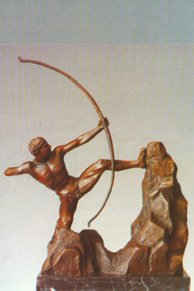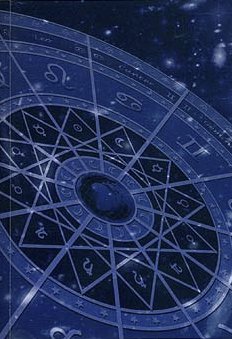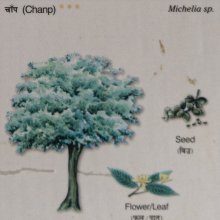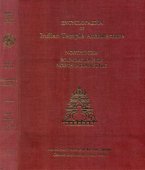Capa, Cāpa: 26 definitions
Introduction:
Capa means something in Hinduism, Sanskrit, Buddhism, Pali, Marathi, Hindi, biology, Tamil. If you want to know the exact meaning, history, etymology or English translation of this term then check out the descriptions on this page. Add your comment or reference to a book if you want to contribute to this summary article.
Alternative spellings of this word include Chapa.
Images (photo gallery)
In Hinduism
Dhanurveda (science of warfare)
Source: Wisdom Library: DhanurvedaCāpa (चाप) refers to a weapon (“bow”). It is a Sanskrit word defined in the Dhanurveda-saṃhitā, which contains a list of no less than 117 weapons. The Dhanurveda-saṃhitā is said to have been composed by the sage Vasiṣṭha, who in turn transmitted it trough a tradition of sages, which can eventually be traced to Śiva and Brahmā.

Dhanurveda (धनुर्वेद) refers to the “knowledge of warfare” and, as an upaveda, is associated with the Ṛgveda. It contains instructions on warfare, archery and ancient Indian martial arts, dating back to the 2nd-3rd millennium BCE.
Jyotisha (astronomy and astrology)
Source: Wisdom Library: Brihat Samhita by VarahamihiraCāpa (चाप) refers to the “staff (of a flag)”, according to the Bṛhatsaṃhitā (chapter 3), an encyclopedic Sanskrit work written by Varāhamihira mainly focusing on the science of ancient Indian astronomy astronomy (Jyotiṣa).—Accordingly, “If the sun should appear like a pot; he brings on hunger and death; if he should appear broken, the reigning prince dies; if without rays, mankind will be afflicted with fears; if like a gate, then the capital city, if like an umbrella then the country, will perish. If the sun should appear like a flag staff [i.e., dhvaja-cāpa-nibha], or a bow, or quivering or of sharp rays he will bring on wars; if there should appear black lines on his disc the reigning prince will die by the hand of his own minister”.
Source: Google Books: The goladhyaya in Nityananda’s Sarvasiddhanta-rajaCāpa (चाप) refers to “arc-lengths”, according to a particular manuscript of Nityānanda’s Sarvasiddhāntarāja.—[...] The digital trace from f. 11 v (shown here to the right) depicts how Sine (jyā) and Co-sine (koṭijyā) of the arc-lengths (cāpas) are to be understood in terms of the parts of inscribed right triangles, and how the distribution of measures of arc helps the calculation of Sine values.
Source: Wikibooks (hi): Sanskrit Technical TermsCāpa (चाप).—Arc. Note: Cāpa is a Sanskrit technical term used in ancient Indian sciences such as Astronomy, Mathematics and Geometry.

Jyotisha (ज्योतिष, jyotiṣa or jyotish) refers to ‘astronomy’ or “Vedic astrology” and represents the fifth of the six Vedangas (additional sciences to be studied along with the Vedas). Jyotisha concerns itself with the study and prediction of the movements of celestial bodies, in order to calculate the auspicious time for rituals and ceremonies.
Shaktism (Shakta philosophy)
Source: Google Books: ManthanabhairavatantramCāpa (चाप) (Cf. Dhanus) refers to the “bow” and as one of the weapons (attributes) of Goddess Kubjikā symbolizes “the acquisition of control of others”, according to the Manthānabhairavatantra, a vast sprawling work that belongs to a corpus of Tantric texts concerned with the worship of the goddess Kubjikā.—Accordingly, “(Now) I will tell (you about) the great weapons of that (goddess) Kubjikā. [...] A correct knowledge of mantra arises by means of the bell and a correct understanding of the scriptures from the book. Control (of others is acquired) by means of the bow [i.e., cāpa] and the great accomplishment of (all) the weapons in the Mahāmata by means of the skull”.
Source: Brill: Śaivism and the Tantric Traditions (shaktism)Cāpa (चाप) refers to a “bow”, according to Sāhib Kaul’s Śārikāstrotra.—Accordingly, “[...] My devotion to you nourishes me every day, as the rise of the full moon always nourishes the ocean. On account of the true affluence of victorious devotion to you I even ignore the excellent Lakṣmī. The whole world consists of you, Goddess of Gods! Your body is consciousness, you are alone and perfectly established. Nowhere is there ignorance. Thus, where do we see the son of a barren woman run and raise his bow (cāpa)? [...]”.

Shakta (शाक्त, śākta) or Shaktism (śāktism) represents a tradition of Hinduism where the Goddess (Devi) is revered and worshipped. Shakta literature includes a range of scriptures, including various Agamas and Tantras, although its roots may be traced back to the Vedas.
Purana and Itihasa (epic history)
Source: archive.org: Shiva Purana - English TranslationCāpa (चाप) refers to the “bow” (of Kāma), according to the Śivapurāṇa 2.3.17 (“The dialogue between Indra and Kāmadeva”).—Accordingly, as Kāma said to Brahmā: “[...] O dear friend, I shall cause the downfall of that enemy of yours who is performing a severe penance to usurp your position. [...] I can undoubtedly make Brahmā and Viṣṇu go astray. Others are of no consideration. I shall make even Śiva fall. I have only five arrows that are soft and flowery. My bow is of three types [i.e., cāpa—cāpastridhā]. That too is flowery. The bowstring consists of bees. My support and strength is my beloved wife Ratī. Spring is my minister. O god, I am having five forces. The moon, the storehouse of nectar, is my friend. [...]”.

The Purana (पुराण, purāṇas) refers to Sanskrit literature preserving ancient India’s vast cultural history, including historical legends, religious ceremonies, various arts and sciences. The eighteen mahapuranas total over 400,000 shlokas (metrical couplets) and date to at least several centuries BCE.
Shaivism (Shaiva philosophy)
Source: SOAS University of London: Protective Rites in the Netra TantraCāpa (चाप) refers to a “bow”, according to the Netratantra of Kṣemarāja: a Śaiva text from the 9th century in which Śiva (Bhairava) teaches Pārvatī topics such as metaphysics, cosmology, and soteriology.—Accordingly, [verse 9.19cd-26, while instructing to visualize Sadāśiva in order to worship the formless Amṛteśa]—“[He] resembles the swelling moon, a heap of mountain snow. [...] [Sadāśiva has] a shield, a mirror, a bow (cāpa—spheṭakādarśacāpaṃ ca), a citron tree, and a water jar. At his head is a half moon. [He who meditates of Sadāśiva] should perceive the Eastern face as yellow; the Southern a wrathful, terrible black [that has] an unnatural, tusked mouth. [...]”.

Shaiva (शैव, śaiva) or Shaivism (śaivism) represents a tradition of Hinduism worshiping Shiva as the supreme being. Closely related to Shaktism, Shaiva literature includes a range of scriptures, including Tantras, while the root of this tradition may be traced back to the ancient Vedas.
Shilpashastra (iconography)
Source: Shodhganga: Elements of Art and Architecture in the Trtiyakhanda of the Visnudharmottarapurana (shilpa)Cāpa (चाप) refers to one of the five different types of Eyes, according to the Viṣṇudharmottarapurāṇa, an ancient Sanskrit text which (being encyclopedic in nature) deals with a variety of cultural topics such as arts, architecture, music, grammar and astronomy.—According to the Viṣṇudharmottarapurāṇa, the first variety of the eye should be in the shape of cāpa i.e., a bow and it should be three yavas in measurement. It is important to note that the difference between the cāpa form and the śara form of eyes can be pointed out on the basis of the measurement. Here the particular measurements specified for the portrayal of eyes reflects the writer’s observational maturity.

Shilpashastra (शिल्पशास्त्र, śilpaśāstra) represents the ancient Indian science (shastra) of creative arts (shilpa) such as sculpture, iconography and painting. Closely related to Vastushastra (architecture), they often share the same literature.
Biology (plants and animals)
Source: Google Books: CRC World Dictionary (Regional names)1) Capa in India is the name of a plant defined with Hibiscus rosa-sinensis in various botanical sources. This page contains potential references in Ayurveda, modern medicine, and other folk traditions or local practices It has the synonym Hibiscus rosasinensis L. (among others).
2) Capa is also identified with Gossypium arboreum It has the synonym Gossypium arboreum Vell. (etc.).
3) Capa in Indonesia is also identified with Blumea balsamifera It has the synonym Conyza appendiculata Blume (etc.).
Example references for further research on medicinal uses or toxicity (see latin names for full list):
· Science and Culture (1991)
· Vistas in Cytogenetics (1989)
· Prodromus Systematis Naturalis Regni Vegetabilis (DC.) (1836)
· Acta Botanica Sinica (1985)
· Acta Agric. Univ. Zhejiang. (1997)
· Species Plantarum (1753)
If you are looking for specific details regarding Capa, for example side effects, chemical composition, extract dosage, diet and recipes, health benefits, pregnancy safety, have a look at these references.

This sections includes definitions from the five kingdoms of living things: Animals, Plants, Fungi, Protists and Monera. It will include both the official binomial nomenclature (scientific names usually in Latin) as well as regional spellings and variants.
Languages of India and abroad
Pali-English dictionary
Source: BuddhaSasana: Concise Pali-English Dictionarycāpa : (m.) a bow.
Source: Sutta: The Pali Text Society's Pali-English DictionaryCāpa, (m. nt.) (Sk. cāpa, from *qēp tremble, cp. capala wavering, quivering) a bow M. I, 429 (opposed to kodaṇḍa); Dh. 156 (°âtikhīṇa shot from the bow, cp. DhA. III, 132), 320 (Abl. cāpāto metri causa); J. IV, 272; V, 400; Miln. 105 (daḷha°), 352.

Pali is the language of the Tipiṭaka, which is the sacred canon of Theravāda Buddhism and contains much of the Buddha’s speech. Closeley related to Sanskrit, both languages are used interchangeably between religions.
Marathi-English dictionary
Source: DDSA: The Molesworth Marathi and English Dictionarycapa (चप).—int ( H) Silent! still! whist!
--- OR ---
capa (चप).—ad ( H) Still, quietly, mutely.
--- OR ---
cāpa (चाप).—n m (S) A bow. 2 m ( H) The lock of a gun. 3 m (cāpaṇēṃ) A screw-press (for compressing bales of cotton &c.) 4 A torturing instrument. Applied to the ear &c. 5 The flap or lobe of the ear. cāpa lāvaṇēṃ To worry or torment.
--- OR ---
cāpā (चापा).—m The lobe or flap of the ear.
Source: DDSA: The Aryabhusan school dictionary, Marathi-Englishcapa (चप).—int Silent! still! whist!
--- OR ---
capa (चप) [-kan-kara-dinī-diśī, -कन्-कर-दिनी-दिशी].—ad In a shake, trice, jiffey.
--- OR ---
cāpa (चाप).—n A bow. m The lock of a gun. A screw-press; a torturing instru- ment. The lobe of the ear. cāpa lāvaṇēṃ To torment.
--- OR ---
cāpā (चापा).—m A flower-tree or its flower. The lobe of the ear.
Marathi is an Indo-European language having over 70 million native speakers people in (predominantly) Maharashtra India. Marathi, like many other Indo-Aryan languages, evolved from early forms of Prakrit, which itself is a subset of Sanskrit, one of the most ancient languages of the world.
Sanskrit dictionary
Source: DDSA: The practical Sanskrit-English dictionaryCāpa (चाप).—[capasya vaṃśabhedasya vikāraḥ aṇ Tv.]
1) A bow; ताते चापद्वितीये वहति रणधुरां को भयस्यावकाशः (tāte cāpadvitīye vahati raṇadhurāṃ ko bhayasyāvakāśaḥ) Ve.3.5; so चापपाणिः (cāpapāṇiḥ) 'with a bow in hand'.
2) The rain-bow.
3) (In geom.) An arc of a circle.
4) The sign of the zodiac called Sagittarius..
Derivable forms: cāpaḥ (चापः).
Source: Cologne Digital Sanskrit Dictionaries: Shabda-Sagara Sanskrit-English DictionaryCāpa (चाप).—m.
(-paḥ) 1. A bow. 2. (In Gemetry,) An are or portion of a circle. 3. Sagittarius, the ninth sign of the Zodiac. E. cap to cast, (arrows,) affix aṇ.
Source: Cologne Digital Sanskrit Dictionaries: Benfey Sanskrit-English DictionaryCāpa (चाप).— (probably from the [Causal.] of ci), m. and n. A bow, [Mānavadharmaśāstra] 7, 192.
Source: Cologne Digital Sanskrit Dictionaries: Cappeller Sanskrit-English DictionaryCāpa (चाप).—[masculine] [neuter] bow.
Source: Cologne Digital Sanskrit Dictionaries: Monier-Williams Sanskrit-English Dictionary1) Capa (चप):—? See cāpa.
2) Cāpa (चाप):—mn. ([from] capa [gana] tālādi) a bow, [Manu-smṛti vii, 192; Mahābhārata] etc.
3) (in [geometry]) an arc, [Sūryasiddhānta ii f., vi, xi]
4) Sagittarius, [Varāha-mihira’s Bṛhat-saṃhitā]
5) a rainbow (cf. indraśakra-), [Bhāgavata-purāṇa i, 11, 28]
6) a kind of [astronomy] instrument, [Golādhyāya xi, 2 and 5]
7) a particular constellation (= dhanus), [Varāha-mihira’s Bṛhajjātaka xii, 18]
8) a [particular] measure of length, [Daśakumāra-carita]
9) m. Name of a family.
Source: Cologne Digital Sanskrit Dictionaries: Yates Sanskrit-English DictionaryCāpa (चाप):—(paḥ) 1. m. A bow; arc.
Source: DDSA: Paia-sadda-mahannavo; a comprehensive Prakrit Hindi dictionary (S)Cāpa (चाप) in the Sanskrit language is related to the Prakrit word: Cāva.
[Sanskrit to German]
Sanskrit, also spelled संस्कृतम् (saṃskṛtam), is an ancient language of India commonly seen as the grandmother of the Indo-European language family (even English!). Closely allied with Prakrit and Pali, Sanskrit is more exhaustive in both grammar and terms and has the most extensive collection of literature in the world, greatly surpassing its sister-languages Greek and Latin.
Hindi dictionary
Source: DDSA: A practical Hindi-English dictionaryCāpa (चाप) [Also spelled chap]:—(nf) are; pressure; a bow; (foot) sound/blow.
...
Kannada-English dictionary
Source: Alar: Kannada-English corpusCapa (ಚಪ):—[noun] the stem of any of the woody or treelike tropical and semitropical grasses of the genera Bambusa; a bamboo.
--- OR ---
Cāpa (ಚಾಪ):—
1) [noun] a flexible strip of wood or other material, bent by a string stretched between its ends, for shooting arrows; a bow.
2) [noun] a part of the circumference of a circle; an arc.
3) [noun] a bow or arc of prismatic colours appearing in the heavens opposite the sun and caused by the refraction and reflection of the sun’s rays in drops of rain.
4) [noun] the ninth sign of the zodiac; the Sagittarius.
5) [noun] (astrol.) a condition in which the positions of the nine planets are distributed in all the seven houses from the tenth to fourth houses of the zodiac.
6) [noun] (rhet.) a kind of tricky composition.
--- OR ---
Cāpa (ಚಾಪ):—[noun] a kind of animal the skin of which is processed and used in making percussion instruments.
Kannada is a Dravidian language (as opposed to the Indo-European language family) mainly spoken in the southwestern region of India.
Tamil dictionary
Source: DDSA: University of Madras: Tamil LexiconCāpā (சாபா) noun See சாப்பா. [sappa.]
Tamil is an ancient language of India from the Dravidian family spoken by roughly 250 million people mainly in southern India and Sri Lanka.
See also (Relevant definitions)
Starts with (+177): Capa -Kana -Kara -Dini -Dishi, Capa de la reina, Capa Theri, Capa-vanpulu, Capabhaga, Capacanem, Capacapa, Capacapanem, Capacaratti, Capacarya, Capacete-de-jupiter, Capacopa, Capacu, Capacupa, Capada, Capadacapada, Capadaka, Capadalakha, Capadasa, Capadasi.
Ends with (+54): Acapa, Akhandalacapa, Animishacapa, Arttacapa, Atiraktacapa, Avocado acapa, Bahucapa, Brihaccapa, Capacapa, Cinnagiricapa, Citracapa, Cupacapa, Devacapa, Devemdracapa, Dhritacapa, Dhvajacapa, Divijacapa, Gaganacapa, Gapacapa, Gopaticapa.
Full-text (+169): Pushpacapa, Capapata, Capin, Shapa, Capam, Gopaticapa, Tulacapa, Capakakitam, Capayashti, Chapa, Capadasi, Yantiracapam, Nitshapin, Mriducapa, Kusumacapa, Mahendracapa, Skandhacapa, Sthulacapa, Maghavatacapa, Intiracapam.
Relevant text
Search found 41 books and stories containing Capa, Cāpa, Cāpā, Chapa, Saapaa, Sapa; (plurals include: Capas, Cāpas, Cāpās, Chapas, Saapaas, Sapas). You can also click to the full overview containing English textual excerpts. Below are direct links for the most relevant articles:
Rig Veda (translation and commentary) (by H. H. Wilson)
Rig Veda 1.112.20 < [Sukta 112]
Garga Samhita (English) (by Danavir Goswami)
Verse 1.7.52 < [Chapter 7 - Description of the Conquest of All Directions]
Verse 4.20.17 < [Chapter 20 - The Killing of Pralamba]
Verse 4.23.7 < [Chapter 23 - The Story of Sudarcana]
Shrimad Bhagavad-gita (by Narayana Gosvami)
Verse 1.46 < [Chapter 1 - Sainya-Darśana (Observing the Armies)]
Shishupala-vadha (Study) (by Shila Chakraborty)
Daṇḍa-vyūha (Staff array) < [Chapter 6 - Principles of Warfare]
Date of the poet Māgha < [Introduction]
Vastu-shastra (2): Town Planning (by D. N. Shukla)
Towns or Cities in ancient Indian town-planning < [Chapter 2 - Villages, Towns and Forts in General]
The Great Chronicle of Buddhas (by Ven. Mingun Sayadaw)
Part 3 - The story of Upaka and Cāpā < [Chapter 9 - The Buddha Reflecting Deeply on the Profundity of the Dhamma]
Part 46 - The Story of Subhadda, the Wandering Ascetic < [Chapter 40 - The Buddha Declared the Seven Factors of Non-Decline for Rulers]
Related products



